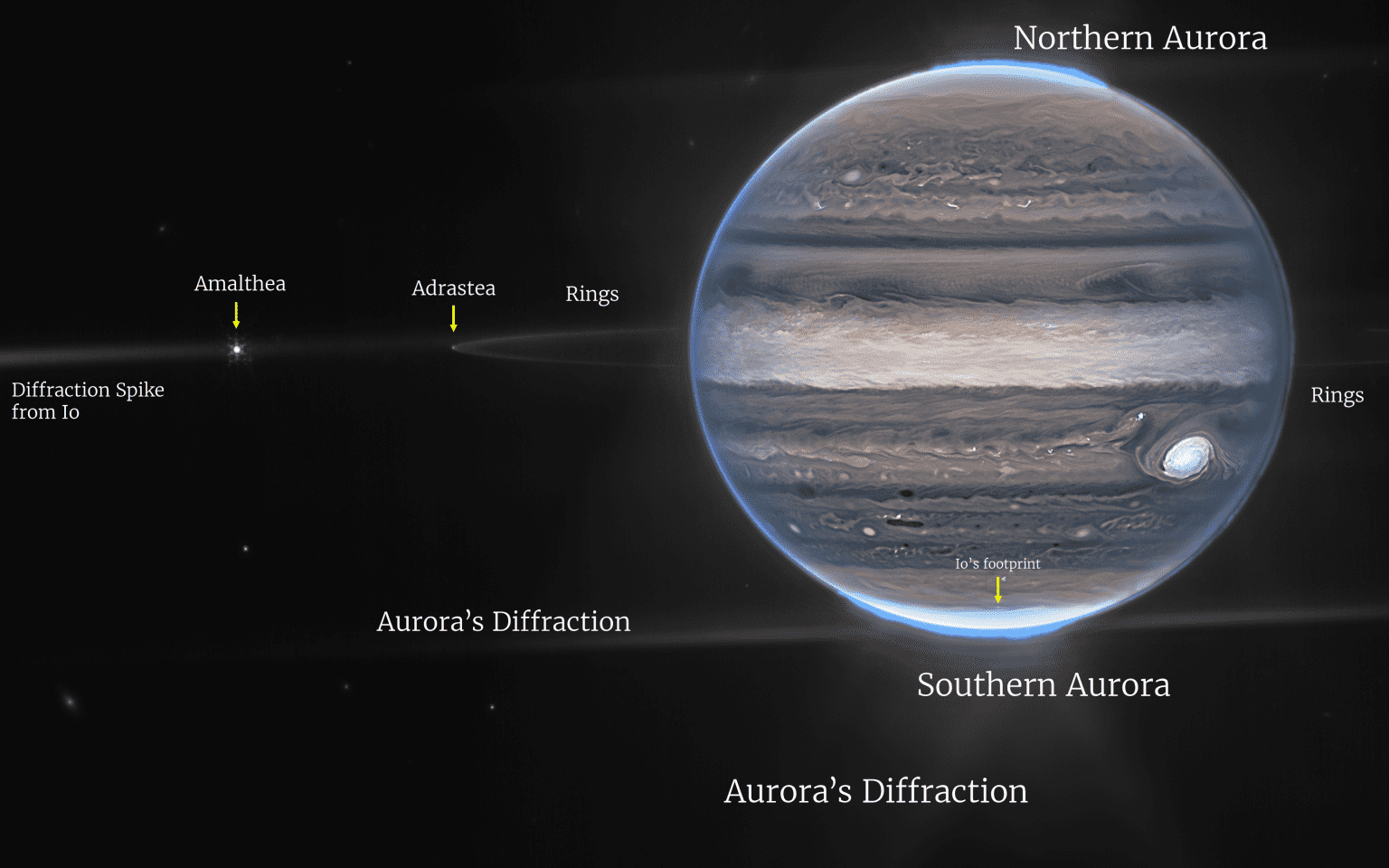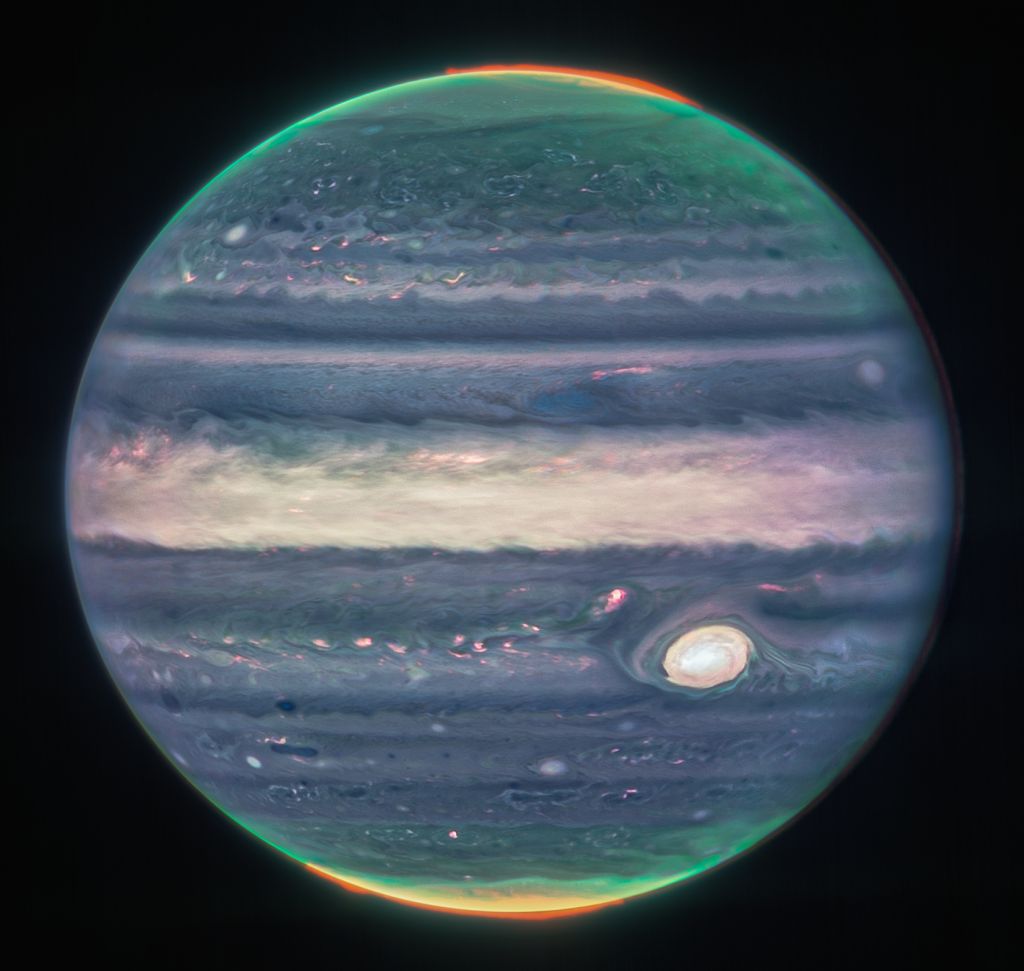New images showcase never-seen details of Jupiter
Previously we covered the first set of Webb images of Jupiter. Now, a second set of images using a high resolution infrared cam trained on Jupiter revealed new features never seen before of the planet’s atmospheric phenomena. The Webb Telescope which we’ve covered before is an international collaboration between NASA and European partner ESA (European Space Agency) and Canadian partner CSA (Canadian Space Agency).
Atmospheric swirls, aurorae, tiny moons, rings
Compared to prior images, in these finer structural details are seen in the atmospheric swirls and hazes. Remember that Jupiter is massive, and each swirl is Earth-sized, or at least continent-sized.
Even more amazing are polar aurorae, presumably due to trapped ions of solar origin captured by the massive Jovian magnetosphere, or magnetic field.

In the 1st image above, called the “wide-field view” because it captures the background of objects around Jupiter, show smaller rings, lesser known moons Amalthea and Adrastea, and atmospheric features. The aurorae show up as blue in these photos, at the north and south polar regions.

The 2nd image above comes from the Near-Infrared Camera (NIRCam), and contains wavelengths from three specialized infrared filters. Infrared sits outside the spectrum of visibility to human eyes so the image has been processed in a way that the variations are visible to us as color. In this processing, the longest infrared wavelengths appear redder and the shortest infrared wavelengths are bluer.
Astronomers and astrophysicists are pleased with the outcome
“We hadn’t really expected it to be this good, to be honest,” was a quote from planetary astronomer Imke de Pater, affiliated with the University of California, Berkeley. She led the observations of Jupiter with Thierry Fouchet, another professor at the Paris Observatory. De Pater is also quoted as saying “It’s really remarkable that we can see details on Jupiter together with its rings, tiny satellites, and even galaxies in one image.”
“This one image sums up the science of our Jupiter system program, which studies the dynamics and chemistry of Jupiter itself, its rings, and its satellite system,” Thierry Fouchet, professor at the Paris Observatory, said. Fouchet is part of the Webb research team.
Citizen scientists join the Webb effort
Data from the Webb first goes to the Space Telescope Science Institute (STScI), which is Webb’s mission and science operations center. Scientists use image processing algorithms to generate intermediate representations of data for analysis and archival. There are multiple work streams for image processing. One of them, involving citizen scientists, is the preparation of images for press. Judy Schmidt of Modesto California is one such citizen scientist.
ShrinkthatFootprint would like to remind everyone that we live on a wonderful planet in an incredible solar system.
(image source: NASA)
